Introduction:
As our world becomes increasingly interconnected and our economy becomes more digital, the importance of critical thinking skills and mindsets cannot be overstated. In response to this shift, educational systems around the globe are recognizing the need to incorporate computational thinking practices into their curricula, particularly for students in grades K-12.
Incorporating computational thinking into education aims to equip students with the necessary skills and perspectives to thrive in a technology-driven society. By emphasizing computational thinking, students develop problem-solving abilities and logical reasoning skills vital for navigating a rapidly changing world. These skills go beyond coding and programming and can be applied to various contexts and industries.
According to the National education policy(NEP 2020), early exposure to computational thinking is crucial for students. Teaching them the relevance and application of these essential skills prepares them to understand when and how to apply computational thinking in their school years.
In this blog post, we will discuss computational thinking skills, techniques, computational thinking examples, and how SETU is aligned to develop computational skills in student
What is computational thinking?
Computational thinking can be defined as a problem-solving process that involves assessing and finding logical solutions to complex problems. It entails organizing problems and utilizing various cognitive faculties, such as creativity and problem-solving, to construct effective solutions. Understanding how a computer approaches problem-solving involves following a series of sequential steps that can be repeated.
Moreover, it is a systematic approach to solving intricate problems by breaking them down into smaller, more manageable steps that a computer or machine can execute. The significance of solving problems computationally executable is that the solutions can be applied to similar problems in different scenarios. Computational thinking also necessitates an agile, creative, and adaptable mindset to efficiently navigate problems and explore potential solutions while effectively using and interpreting data.
While computational thinking has its roots in the thinking process utilized by computer scientists, it is recognized as a problem-solving methodology that anyone can employ in their personal and professional lives. The aim is not to mimic computer reasoning but to develop problem-solving techniques that align with the practices commonly used by computer scientists.
Computational thinking proves to be highly valuable for data scientists as it enables them to solve various data-intensive and quantitative problems. This approach can be applied across multiple domains, including artificial intelligence and mathematics. Additionally, the programming language Python plays a crucial role in computational thinking, as it is commonly used for statistical analysis, allowing data scientists to express solutions on a computer.
Computational thinking explained:
A computational thinking framework was introduced for K-12 schools, emphasizing core concepts and capabilities essential to computational thinking. These included data collection, analysis, representation, problem decomposition, abstraction, algorithms and procedures, automation, parallelization, and simulation.
Algorithms hold a central role in both computer science and computational thinking. They are not solely limited to solving mathematical problems but apply to various disciplines. From following a cooking recipe to providing driving directions, algorithms are involved in our daily lives. Activities like brushing teeth, getting ready for school, or performing steps in a lab experiment all involve algorithms. Understanding and expressing algorithms as precise step sequences enables their comprehension by both humans and machines, with the latter executed by computing programs.
Introducing the concept of abstraction to students can be done through activities such as creating models in physics, like a solar system model. Abstraction enables students to simplify problems by removing complexity and unnecessary details, focusing solely on the critical elements.
Numerous esteemed research, educational, and funding organizations have advocated integrating these core computational thinking constructs and practices into K-12 education. They recognize the importance of exposing students to these concepts early, preparing them with essential computational thinking skills.
Why is mathematics included in the computational thinking curriculum?
The inclusion of mathematics in the computational thinking curriculum is vital. Mathematics is essential for every profession as it fosters logical thinking, problem-solving, and reasoning abilities. It teaches us abstraction, a crucial concept when dealing with complex problems. Integrating mathematics into computing curricula enhances students’ understanding of concepts, helps them overcome math-related fears, and improves problem-solving and critical-thinking abilities.
Our rigorous platform SETU assists students in achieving these computational capabilities to learn to solve puzzles, design algorithms, identify patterns, implement sorting methods, understand hierarchical structures, and plan effectively. These skills have real-life applications beyond computing. For example, asking for directions requires precise and clear instructions, a skill developed through computational thinking practices.
We at SETU assist students in nurturing their problem-solving abilities, critical thinking, and logical reasoning, ensuring they are well-prepared to thrive in a technology-driven world.
Four components of computational thinking
The four components of computational thinking include:
- Decomposition
- Pattern recognition
- Abstraction
- Algorithmic thinking
1. Decomposition in computational thinking:
The decomposition technique is crucial as it enables individuals to delve into the finer details of a larger concept or problem. By breaking down complex issues into smaller components, one can comprehensively understand the whole.
For instance, in medicine, a student learns about the functioning of various organs in the human body to comprehend its overall structure and function. This decomposition approach allows them to grasp the intricate complexities of the human body.
Similarly, in mathematics, students often break down equations into distinct components and solve them step by step to arrive at a solution. This systematic approach aids in comprehending the problem and finding the solution more effectively.
In the realm of computer science, decomposition is vital when creating games. Game designers must break down the game into its fundamental elements, such as characters, narrative, actions, and more, to ensure the smooth functioning of the game. By decomposing the game’s components, designers can effectively manage and coordinate various elements to create an engaging and immersive gaming experience.
2. Pattern recognition in computational thinking:
Pattern recognition is an essential aspect of computational thinking. It involves a child’s ability to interpret and identify similarities and differences in objects and visuals.
Children with strong pattern recognition skills can observe and use patterns to predict or determine the next step. This skill significantly impacts their ability to combine multiple patterns and generate desired outcomes.
Pattern recognition plays a vital role in decision-making as well. Individuals can more effectively navigate and respond to various situations by recognizing patterns.
Pattern recognition holds significant importance in computer science, especially with recent advancements in artificial intelligence. Neural networks, for instance, utilize algorithms to identify underlying relationships within data, much like how the human brain processes information. By studying patterns, computers can detect and utilize them to perform tasks. Similarly, children who develop pattern recognition skills can apply them to make informed decisions and achieve desired outcomes.
3. Abstraction in computational thinking
Abstraction is indeed a fundamental principle in computer science and computational thinking. It involves removing unnecessary details or components from a system, focusing only on what is essential.
Abstraction helps us reduce complexity and improve performance by retaining valuable information and elements while discarding irrelevant or extraneous ones. It enables us to prioritize tasks and carry them out efficiently. By abstracting a problem or system, we can simplify it, keeping only the necessary components and removing unnecessary complexities.
This approach allows us to solve problems quickly and effectively without getting bogged down by unimportant details. Abstraction provides clarity and allows us to grasp the essence and significance of an object or concept.
For example, when studying a topic from a book, we don’t read the entire book cover to cover. Instead, we abstract the information by focusing on the specific topic of interest. This selective approach streamlines our learning process and allows us to extract relevant information efficiently. It is how abstraction works in practice.
4. Algorithmic thinking in computational thinking:
Algorithms are indeed a fundamental aspect of computational thinking. They play a crucial role in problem-solving and the development of solutions. Algorithmic thinking involves breaking down a problem into specific steps or procedures.
In essence, algorithmic thinking entails designing a set of rules or instructions to address a problem or accomplish a task. Individuals create algorithms to tackle similar situations and provide a systematic approach to problem-solving.
For example, in schools, students are taught algorithms for performing operations like division and multiplication. These algorithms provide a structured method for executing these mathematical operations. For instance, students who understand multiplication algorithms can apply them to perform multiplication on any given integer. Algorithms serve as a guide that enables individuals to perform tasks efficiently and consistently.
Moreover, algorithms are instrumental in automating systems. They allow for creating self-executing processes without establishing new patterns or rules each time. By defining a clear sequence of steps through algorithms, systems can automate tasks and operate more streamlined.
Computational Thinking Techniques
We have curated a list of seven powerful computational thinking techniques to empower young innovators with vital problem-solving abilities, ensuring they are well-equipped for the future. By following these suggestions, students can develop essential skills and readiness for the challenges ahead.
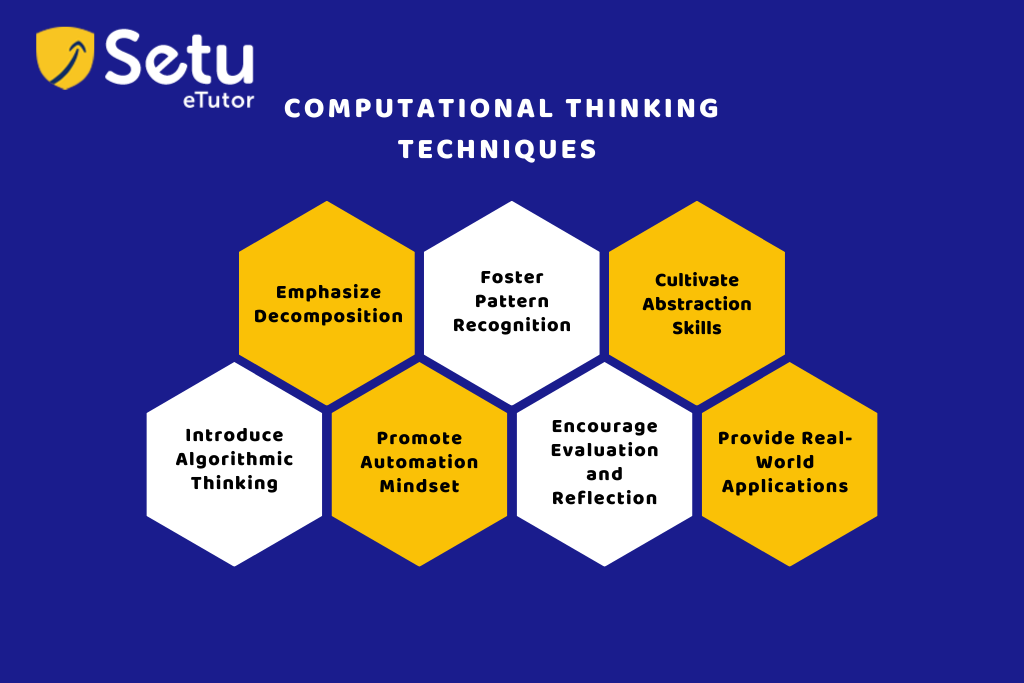
- Emphasize Decomposition: Encourage students to break down complex problems into smaller, manageable parts. They develop a structured problem-solving approach by teaching them to analyze and solve each component individually.
- Foster Pattern Recognition: Help students develop an eye for recognizing patterns and similarities within data or problems. They can identify regularities and apply general solutions to similar situations by honing their pattern recognition skills.
- Cultivate Abstraction Skills: Teach students to focus on essential details while filtering unnecessary or irrelevant information. By understanding the art of abstraction, they can simplify complex problems and work with higher-level concepts.
- Introduce Algorithmic Thinking: Familiarize students with designing step-by-step algorithms to solve problems. They can develop logical and efficient action plans by nurturing their algorithmic thinking skills.
- Promote Automation Mindset: Instill in students the value of automating repetitive tasks. By encouraging them to leverage technology and tools, they can streamline their workflows, save time, and unleash their creativity in solving more complex problems.
- Encourage Evaluation and Reflection: Teach students the importance of evaluating their solutions critically. By fostering a continuous improvement mindset, they learn to identify learning gaps and errors and refine their problem-solving approaches iteratively.
This continuous improvement can be attained through a student nurturing platform SETU, which identifies improvement areas, improves learning outcomes, and provides support through targeted interventions.
- Provide Real-World Applications: Engage students in real-world problem-solving scenarios that require computational thinking skills. By connecting their learning to practical situations, they can understand the relevance and application of computational thinking in various fields.
Computational Thinking Examples:
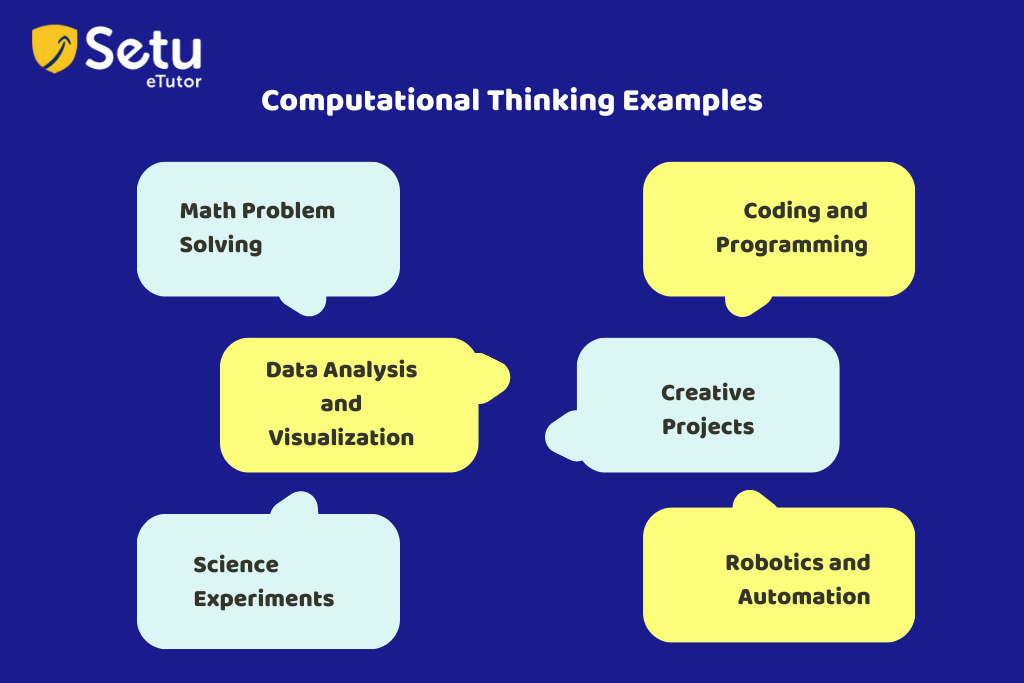
Here are some examples of how computational thinking can be applied by students:
- Math Problem Solving: Computational thinking can aid students in solving math problems by breaking them down into smaller steps. For instance, when solving a complex equation, students can decompose it into simpler components, recognize patterns, and apply algorithms or formulas to find the solution.
- Coding and Programming: Computational thinking is at the core of coding and programming. Students can learn to analyze problems, decompose them into smaller tasks, and then develop algorithms to solve them. Students can write code to create interactive games, design websites, or build mobile apps by applying computational thinking.
- Science Experiments: Computational thinking can be used to plan and conduct scientific experiments. Students can decompose the experiment into sequential steps, recognize patterns in the data collected, analyze trends, and draw conclusions. Computational thinking can also help design simulations or models to understand complex scientific concepts better.
- Robotics and Automation: Students involved in robotics projects can apply computational thinking to program robots. They can break tasks into smaller sub-tasks, identify environmental patterns, and design algorithms to control the robot’s movements and actions.
- Data Analysis and Visualization: Students can use computational thinking to analyze and visualize data from various sources. They can decompose large datasets into manageable subsets, recognize patterns and trends, and apply algorithms to extract meaningful insights.
- Computational thinking enables students to present data in visually appealing ways using graphs, charts, or infographics.
- Creative Projects: Computational thinking is not limited to technical subjects. Students can apply computational thinking to creative projects such as digital art, music composition, or storytelling. They can decompose the creative process, identify patterns or themes, and use algorithms or structures to bring their creative ideas to life.
Conclusion:
In conclusion, computational thinking has become an essential skill in technology. By emphasizing computational thinking as a core component of education and career development, individuals can prepare themselves for the future of work and navigate the evolving job market driven by automation, artificial intelligence, and machine learning.
By integrating computational thinking into curricula, educational systems are equipping students with the foundational skills required to succeed in a future where technology plays a central role in multiple domains.
SETU’s primary focus is cultivating problem-solving and computational thinking as foundational skills among students, empowering them to become creators and inventors of technology rather than mere users. You will witness your children’s continuous intellectual growth by embracing Computational Thinking. We also invite you to explore the available resource materials, summary notes, and videos and witness the systematic progression of topics across different grade levels.
To learn more about the next steps or explore collaboration opportunities with our platform, please contact us to schedule a demo. We look forward to discussing further details with you.

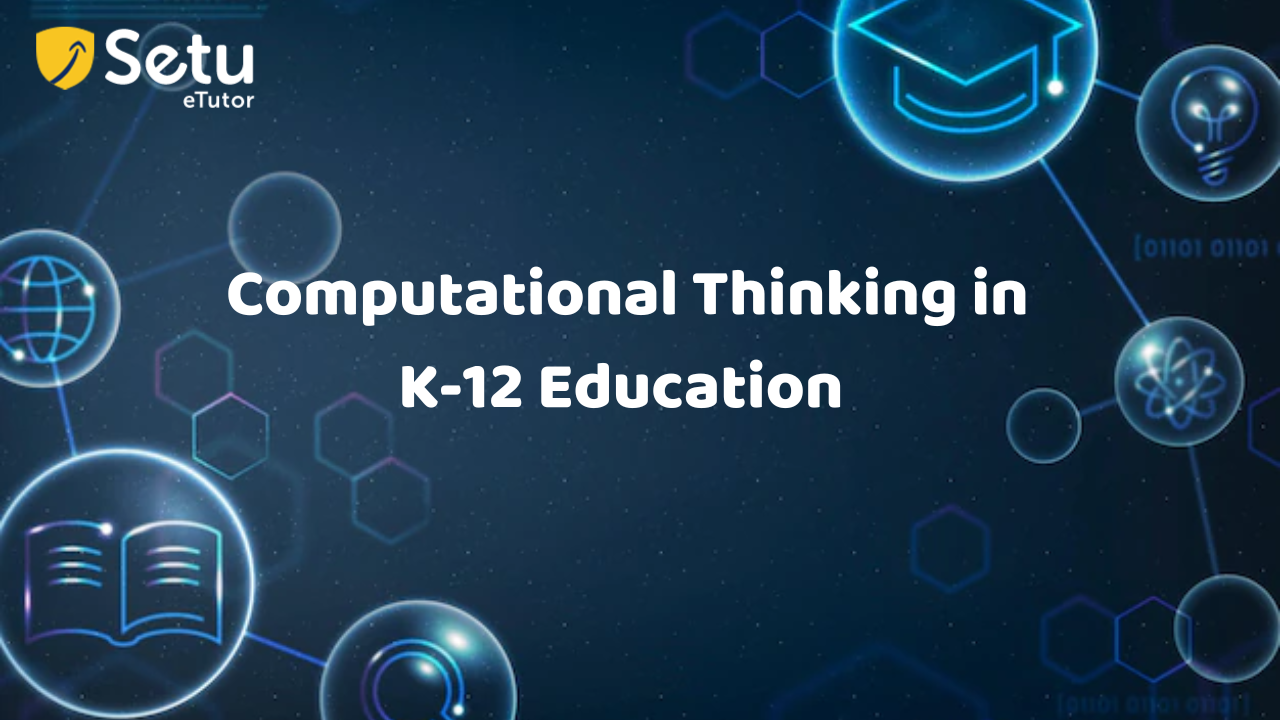




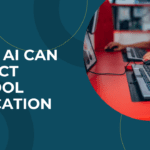
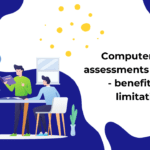
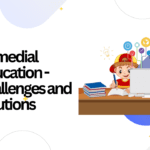
One comment on “Impact of Computational Thinking in K-12 Education”
Admin
test